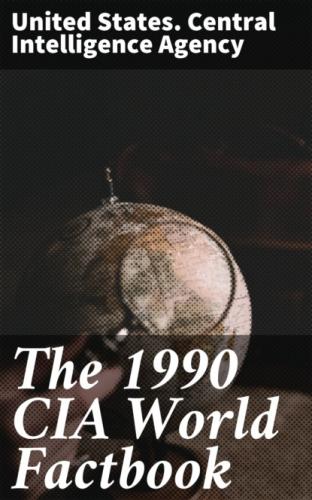Legal system: based on Roman-Dutch law and local customary law; judicial review limited to matters of interpretation; has not accepted compulsory ICJ jurisdiction
National holiday: Botswana Day, 30 September (1966)
Executive branch: president, vice president, Cabinet
Legislative branch: bicameral Parliament consists of an upper house or
House of Chiefs and a lower house or National Assembly
Judicial branch: High Court, Court of Appeal
Leaders: Chief of State and Head of Government—President Quett K. J. MASIRE (since 13 July 1980); Vice President Peter S. MMUSI (since 3 January 1983)
Political parties and leaders: Botswana Democratic Party (BDP), Quett
Masire; Botswana National Front (BNF), Kenneth Koma; Botswana People's Party
(BPP), Knight Maripe; Botswana Independence Party (BIP), Motsamai Mpho;
Botswana Progressive Union (BPU), Daniel Kwele
Suffrage: universal at age 21
Elections:
President—last held 7 October 1989 (next to be held October
1994);
results—President Quett K. J. Masire was reelected by the National
Assembly;
National Assembly—last held 7 October 1989 (next to be held October 1994); results—percent of vote by party NA; seats—(34 total, 30 elected) BDP 31, BNF 3
Communists: no known Communist organization; Koma of BNF has long history of Communist contacts
Member of: ACP, AfDB, CCC, Commonwealth, FAO, G-77, GATT (de facto), IBRD,
ICAO, IDA, IFAD, IFC, ILO, IMF, INTERPOL, ITU, NAM, OAU, Southern African
Customs Union, SADCC, UN, UNESCO, UPU, WHO, WMO
Diplomatic representation: Ambassador Botsweletse Kingsley SEBELE; Chancery at Suite 404, 4301 Connecticut Avenue NW, Washington DC 20008; telephone (202) 244–4990 or 4991; US—Ambassador-designate David PASSAGE; Deputy Chief of Mission Johnnie CARSON; Embassy at Botswana Road, Gaborone (mailing address is P. O. Box 90, Gaborone); telephone p267o 353982 through 353984
Flag: light blue with a horizontal white-edged black stripe in the center
- Economy Overview: The economy has historically been based on cattle raising and crops. Agriculture today provides a livelihood for over 80% of the population, but produces only about 50% of food needs and contributes a small 5% to GDP. The driving force behind the rapid economic growth of the 1970s and 1980s has been the mining industry. This sector, mostly on the strength of diamonds, has gone from generating 25% of GDP in 1980 to over 50% in 1988. No other sector has experienced such growth, especially not that of the agricultural sector, which is plagued by erratic rainfall and poor soils. The unemployment rate remains a problem at 25%. A scarce resource base limits diversification into labor-intensive industries.
GDP: $1.87 billion, per capita $1,600; real growth rate 8.4%
(FY88)
Inflation rate (consumer prices): 11.45% (1989)
Unemployment rate: 25% (1987)
Budget: revenues $1,235 million; expenditures $1,080 million, including capital expenditures of NA (FY90 est.)
Exports: $1.3 billion (f.o.b., 1988); commodities—diamonds 88%, copper and nickel 5%, meat 4%, cattle, animal products; partners—Switzerland, US, UK, other EC-associated members of Southern African Customs Union
Imports: $1.1 billion (c.i.f., 1988); commodities—foodstuffs, vehicles, textiles, petroleum products; partners—Switzerland, US, UK, other EC-associated members of Southern African Customs Union
External debt: $700 million (December 1989 est.)
Industrial production: growth rate 16.8% (FY86)
Electricity: 217,000 kW capacity; 630 million kWh produced, 510 kWh per capita (1989)
Industries: livestock processing; mining of diamonds, copper, nickel, coal, salt, soda ash, potash; tourism
Agriculture: accounts for only 5% of GDP; subsistence farming predominates; cattle raising supports 50% of the population; must import large share of food needs
Aid: US commitments, including Ex-Im (FY70–88), $242 million; Western (non-US) countries, ODA and OOF bilateral commitments (1970–87), $1.6 billion; OPEC bilateral aid (1979–89), $43 million; Communist countries (1970–88), $24 million
Currency: pula (plural—pula); 1 pula (P) = 100 thebe
Exchange rates: pula (P) per US$1—1.8734 (January 1990), 2.0125 (1989), 1.8159 (1988), 1.6779 (1987), 1.8678 (1986), 1.8882 (1985)
Fiscal year: 1 April-31 March
- Communications
Railroads: 712 km 1.0 67-meter gauge
Highways: 11,514 km total; 1,600 km paved; 1,700 km crushed stone or gravel, 5,177 km improved earth, 3,037 km unimproved earth
Civil air: 6 major transport aircraft
Airports: 99 total, 87 usable; 8 with permanent-surface runways; none with runways over 3,659 m; 2 with runways 2,440–3,659 m; 23 with runways 1,220–2,439 m
Telecommunications: the small system is a combination of open-wire lines, radio relay links, and a few radiocommunication stations; 17,900 telephones; stations—2 AM, 3 FM, no TV; 1 Indian Ocean INTELSAT earth station
- Defense Forces
Branches: Army, Air Wing, Botswana Police
Military manpower: males 15–49, 249,480; 131,304 fit for military service; 14,363 reach military age (18) annually
Defense expenditures: 2.2% of GNP (1987)—————————————————————————— Country: Bouvet Island (territory of Norway) - Geography Total area: 58 km2; land area: 58 km2
Comparative area: about 0.3 times the size of Washington, DC
Land boundaries: none
Coastline: 29.6 km
Maritime claims:
Contiguous zone: 10 nm;
Continental shelf: 200 meters or to depth of exploitation;
Extended economic zone: 200 nm;
Territorial sea: 4 nm
Climate: antarctic
Terrain: volcanic; maximum elevation about 800 meters; coast is mostly inacessible
Natural resources: none
Land use: 0% arable land; 0% permanent crops; 0% meadows and pastures; 0% forest and woodland; 100% other
Environment: covered by glacial ice
Note: located in the South Atlantic Ocean 2,575 km south-southwest of the Cape of Good Hope, South Africa
- People
Population: uninhabited
- Government
Long-form name: none
Type: territory of Norway
- Economy
Overview: no economic activity
- Communications
Ports: none; offshore anchorage only
Telecommunications: automatic meteorological station
- Defense Forces
Note: defense is the responsibility of Norway
——————————————————————————
